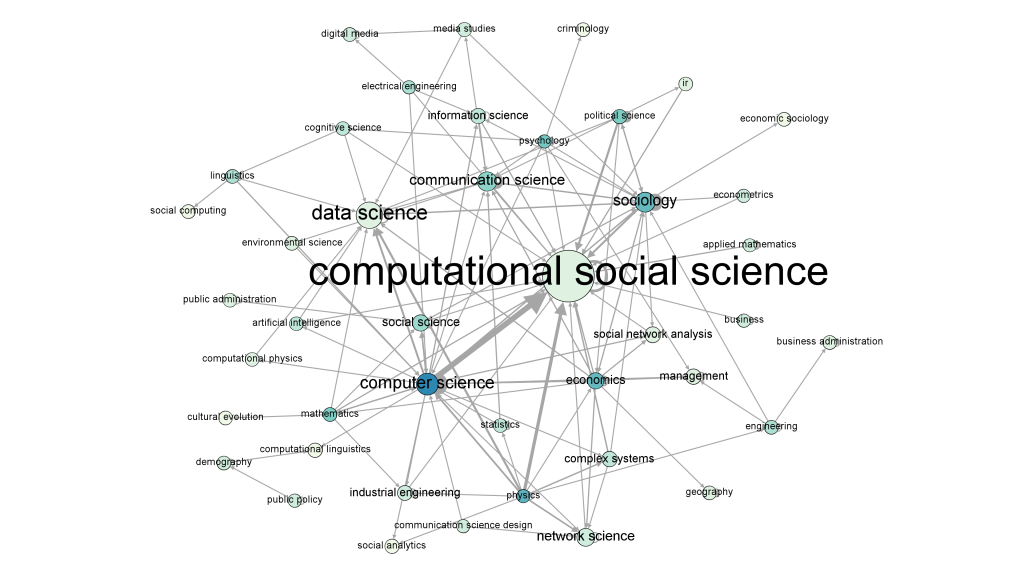The 5th edition of IC²S² took place from July 17 to 20, 2019 at the University of Amsterdam, the Netherlands. Over 480 participants from 40 countries attended the conference, tutorials and accompanying events, such as a warmup event, job fair and datathon. The conference featured thematic presentations, poster presentations and panels on various topics related to computational social science. To get an idea of the conference, visit the Conference impression page.
As part of the opening ceremony of the conference (watch), I showed the following visualization created from information gathered during the conference registration process. A more detailed discription of this network visual can be found below.

The 2019 IC²S² Discipline Migration Network
Computational social science is often said to be highly interdisciplinary, as it typically attracts researchers from both the social sciences as well as computational science. To investigate this interdisciplinarity in more detail, we consider the scientific field migration activity of 480 registered participants of the 5th International Conference on Computational Social Science (IC²S² 2019). During the conference registration process, people were asked to enter their original scientific discipline as well as their current discipline. From this data, a so-called scientific discipline migration network was extracted.
The network is shown in the figure above. Each node (circle) in the network is a discipline. Each directed link (arrow) denotes movement from one discipline to the other. The width of a link is proportional to the link weight, i.e., the number of people moving between the disciplines that the arrow connects. The size of a node and its label correspond to the node’s weighted indegree, denoting the number of people moving to that discipline. The color of a node is proportional to its weighted outdegree, representing how many people move away from that discipline.
We can observe a number of things from this network visualization.
First, we note that computational social science itself is by far the discipline which is most often being moved towards from other fields, having the highest weighted indegree. The incoming links indeed originate from the various social sciences (sociology, psychology, political science and communication science) as well as computational sciences (mostly computer science and physics).
Second, next to computational social science, we also observe other relatively new related fields, including complex systems and data science. Interestingly, the latter field, data science, which is sometimes said to be similar to computational social science, has a different position in this network. It indeed seems to draw from the same computational crowd as computational social science does, but barely anyone from the social sciences appears to indicate having moved there. This may be because data science is deemed to generic of a field for social scientists, and strengthens the claim that computational social science is truly about combining novel data-driven/computational techniques with substantial social science theory.
Finally we can note that fields such as economics and management are present, hopefully indicating how computational social science is nowadays also attracting researchers who would otherwise label themselves as being active in the field of socio-economics.
Last but not least, many people also indicate that computational social science is their original and current discipline, denoted by the self-loop. This is promising and to some extent rewarding, as the community has recently put a lot of effort in establishing computational social science as a field of its own, which apparently is taking shape already, at least based on the field’s flagship conference’s participants of today.
